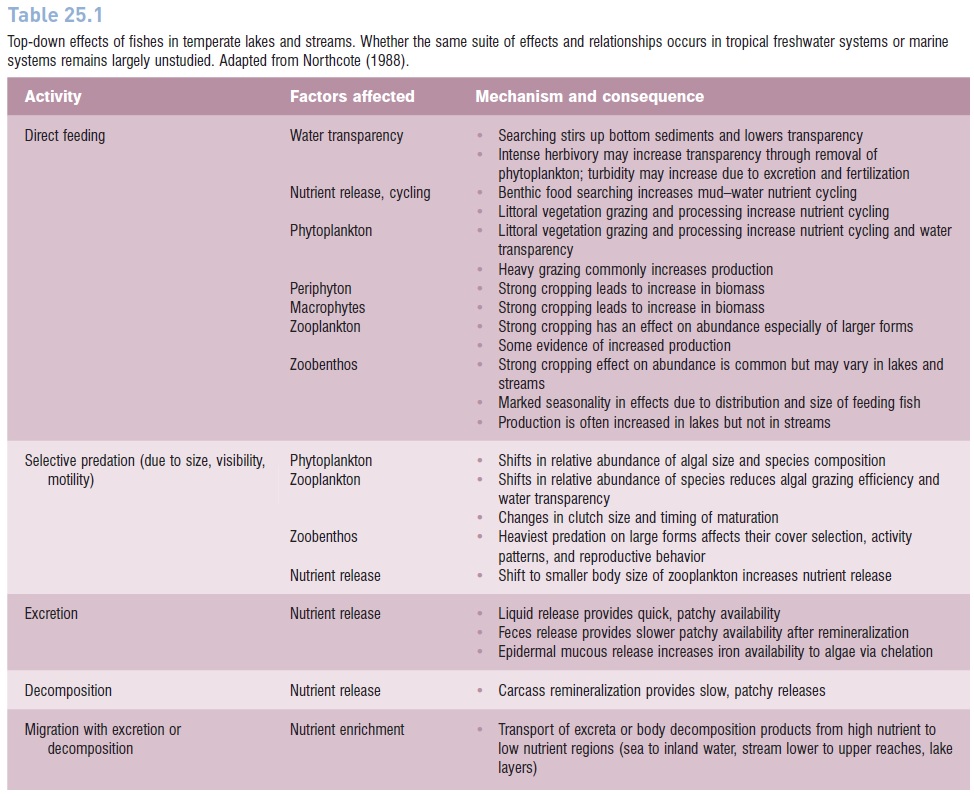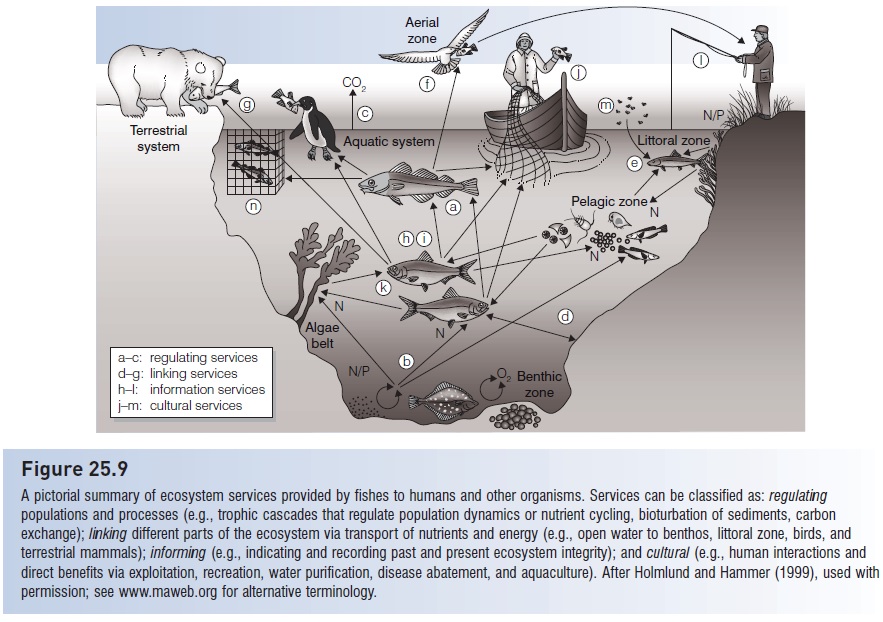Chapter: The Diversity of Fishes: Biology, Evolution, and Ecology: Communities, ecosystems, and the functional role of fishes
Fishes in the ecosystem
Fishes in the ecosystem
The preceding discussions have focused on the effects that fishes as predators have on trophic levels lower in the food web of the community. Such “top-down” regulation of community dynamics can be contrasted with “bottom-up” factors affecting plant growth and subsequent plant or animal prey availability, which ultimately determines fish abundance and diversity. From the fish’s perspective, topdown processes involve the ways that fishes affect the structure and function of an ecosystem (Table 25.1), whereas bottom-up processes involve the physical and chemical factors that affect food availability for fishes. In addition to these direct interactions, ecosystem function is affected by indirect effects of different trophic levels on one another which are separated by several steps or levels in the trophic organization of a community. Fishes function in such interactions as agents that transfer and cycle nutrients, energy, and matter and that link different parts of the ecosystem together. In addition to their interactions with other members of the biotic community, many of the activities and relationships have direct benefits to humans and can be considered as ecosystem services provided by fishes. Our dependence on fishes for the functional roles
Table 25.1
Top-down effects of fishes in temperate lakes and streams. Whether the same suite of effects and relationships occurs in tropical freshwater systems or marine systems remains largely unstudied. Adapted from Northcote (1988)

Figure 25.9
A pictorial summary of ecosystem services provided by fishes to humans and other organisms. Services can be classified as: regulating populations and processes (e.g., trophic cascades that regulate population dynamics or nutrient cycling, bioturbation of sediments, carbon exchange); linking different parts of the ecosystem via transport of nutrients and energy (e.g., open water to benthos, littoral zone, birds, and terrestrial mammals); informing (e.g., indicating and recording past and present ecosystem integrity); and cultural (e.g., human interactions and direct benefits via exploitation, recreation, water purification, disease abatement, and aquaculture). After Holmlund and Hammer (1999), used with permission; see www.maweb.org for alternative terminology.

Related Topics